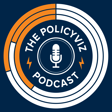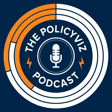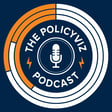
The Future of Dashboards, Data Apps, and AI with Plotly’s Chris Parmer
In this week’s episode, I talk with Chris Parmer, co-founder of Plotly, about how the company is integrating AI into the next generation of data visualization and analytics tools. Chris walks me through the thinking behind Plotly Studio, their new AI-native environment where natural language prompts generate real, auditable code for charts, dashboards, and data apps. We discuss how this approach reduces bottlenecks for data teams, empowers non-technical users, and reshapes the role of the data visualization expert. We also dive into the limits of public dashboards, the rise of generative interfaces, and what a future of AI-driven exploratory analysis might look like. It’s a fascinating look at where data tools are heading and how analysts can stay ahead.
Keywords: Plotly, Plotly Studio, data visualization, AI tools, generative AI, dashboards, data apps, Python, code generation, data workflows, data analysis, natural language interfaces, data science, analytics, enterprise data security, data storytelling, Jon Schwabish, Chris Parmer
Subscribe to the PolicyViz Podcast wherever you get your podcasts.
Become a patron of the PolicyViz Podcast for as little as a buck a month
Check out Plotly at: https://plotly.com/
Follow me on Instagram, LinkedIn, Substack, Twitter, Website, YouTube
Email: jon@policyviz.com


